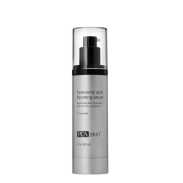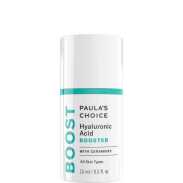Comparison between PCA SKIN Hyaluronic Acid Boosting Serum vs. Paula's Choice Hyaluronic Acid Booster
- 41 components -
- 20 components -
Find out which product is better for your skin.
Ingredients in both products 14
Components only in PCA SKIN Hyaluronic Acid Boosting Serum 27
Propanediol, Niacinamide, Dimethicone, Hydrolyzed Yeast Extract, Polyglyceryl-3 Beeswax and 22 more. Show all.
Uniqueness: 65.9%
Components only in Paula's Choice Hyaluronic Acid Booster 6
Uniqueness: 30.0%
Face to Face
Components position by position
1
Water
1
Water
2
Propanediol
2
Glycerin
3
Glycerin
3
Yeast Extract
4
Niacinamide
4
Sodium Hyaluronate
5
Dimethicone
5
Hyaluronic Acid
6
Hydrolyzed Yeast Extract
6
Ceramide NP
7
Polyglyceryl-3 Beeswax
7
Ceramide Ap
8
Coconut Alkanes
8
Ceramide EOP
Show others
Positive Effects
Find out what good effects the product has
Both products provide the following effects: , Moisturizing, Cleansing, Acne fighting, Softening, Soothing, Anti-aging, Rejuvenation, Antiseptic, Deodorant, Protection, Hair conditioning, Hair structure improvement, Hair gloss
Effects unique for Hyaluronic Acid Boosting Serum:
Antioxidant, Pore Shrinking, Lightening, Lifting, Elasticity improvement, Antifungal, Tones up skin, RegenerationEffects unique for Hyaluronic Acid Booster:
Healing, Nutrifying, Hair protection-- Show more --
ECO Metrics
Find out how eco-friendly the components are
Vegan
No
No
Cruelty free
No
Yes
Reef safe
Yes
Yes
Ozone layer safe
Yes
Yes
Organic score
natural
7 out of 41
17%
chemical
25 out of 41
61%
natural
4 out of 20
20%
chemical
12 out of 20
60%
Concerns
Pay attention to this information
-- Extra information --
Components by Skin Type
Find out what components are good or bad for your skin type
Dry skin
Positive: 2Negative: 0
Glycerin#3Sodium Hyaluronate#14
Oily skin
Positive: 0Negative: 1
Coconut Alkanes#8
Sensitive skin
Positive: 0Negative: 1
Rosmarinus Officinalis (Rosemary) Leaf Oil#29
Dry skin
Positive: 4Negative: 0
Glycerin#2Sodium Hyaluronate#4Panthenol#12Butylene Glycol#14
Oily skin
Positive: 0Negative: 0
Sensitive skin
Positive: 0Negative: 0

